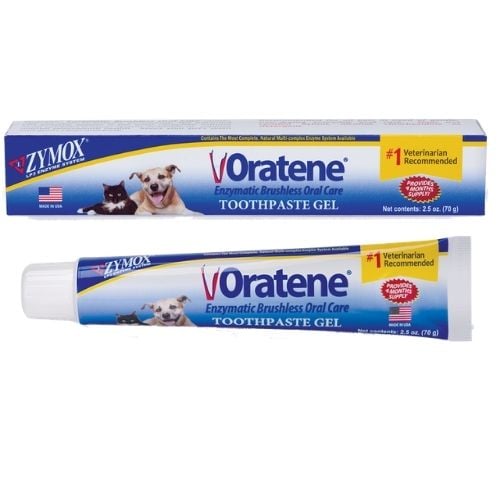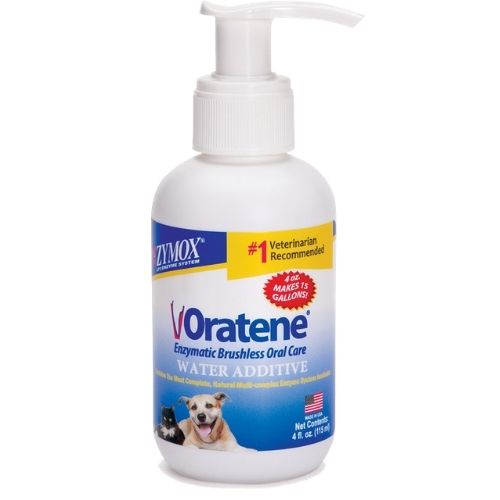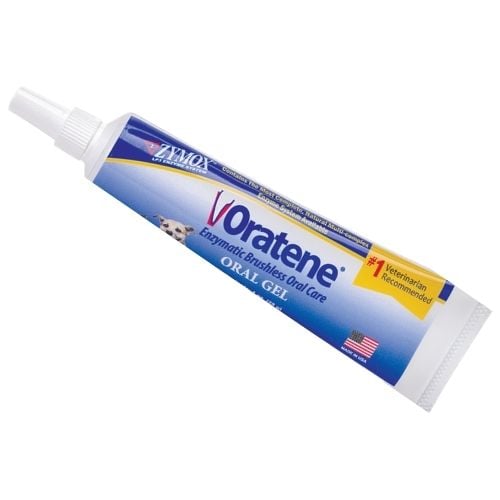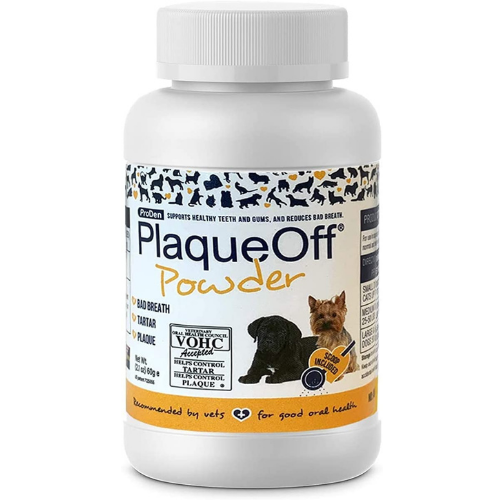 It seems like our dogs grow from bouncing puppies to mellow seniors in a blink of an eye. And for those that share their lives with dogs, the one downside is that they don't live long enough. We want them to live forever.
It seems like our dogs grow from bouncing puppies to mellow seniors in a blink of an eye. And for those that share their lives with dogs, the one downside is that they don't live long enough. We want them to live forever.
While our dogs' lifespans are much shorter than our own, we can make simple changes in their lifestyle and care to ensure that they live as long and as comfortably as possible.
These things are all about prevention — being proactive versus reactive. The tips listed below help with both quality of life and longevity for your dog.
And for the most part, being preventive is also cost-effective in the long run. It's a win-win for all, and the least we can do for our dogs that bring us so much love and joy.
1. Feed Your Dog a Healthy and Balanced Diet
We hear all the time that our bodies are a temple, and what we put into it is what we are going to get out of it. Well, the same is true of our dogs and their food.
It’s important that we feed a well-balanced diet to ensure optimal health and longevity for our canine pals.
Dogs are omnivores, meaning they eat both meat and plants, just like we do. Therefore, it’s important not to restrict their diet one way or the other as it is important that they receive nutrients from both of these sources.
Tips for Choosing High-Quality Dog Food
- Feeding a food that is recognized by the AAFCO (American Association of Feed Control Officials) helps ensure the food and/or company is of a high standard. AAFCO establishes dietary guidelines based on scientific studies for the required level of carbohydrates, protein, different vitamins, and minerals.
Not all dog foods comply with this basic standard so it is recommended that you check that yours does.
If a diet has followed the AAFCO standards for sustaining life and health for a specific life stage, they can put this statement on their product. Some food manufacturers go one step further and have tested their food in order to meet AAFCO standards.
They’ve done feeding trials to show that pets can thrive and do well on their diet. Check your dog food label for one of these two statements.
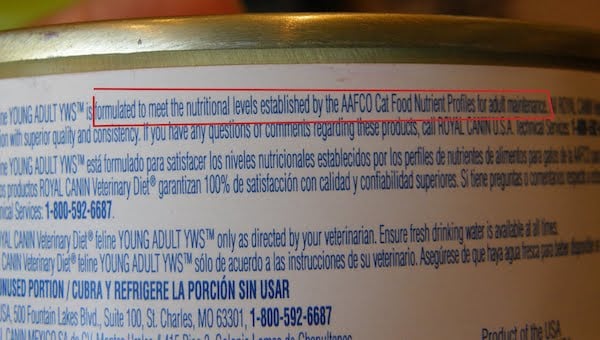
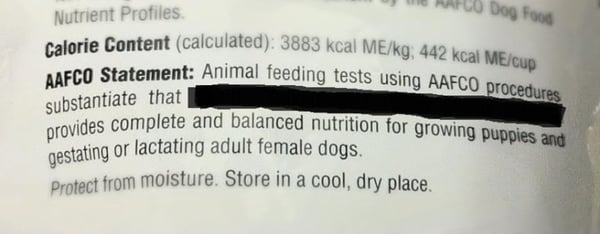
- Also, look at the label for the top 3 ingredients listed. These are the main ingredients, so make sure these are the main items you expect to be feeding, such as single proteins or vegetables versus items you can't pronounce!
- Talking about the meat ingredients, it’s important that these are actually meat and not listed as ‘chicken dinner for dogs’ or ‘dog beef stew,’ etc. The same goes for terms like ‘beef or chicken flavor.’
These are just ways to confuse us into thinking we’re feeding our pups something that contains meat when in fact, the percentage of meat contained is much lower than we are led to believe. - If you see the phrase ‘with’ on the label (examples: ‘with pork’ or ‘with tilapia’), the food is only required to contain 3% of that ingredient!
- You may wish to consider a diet that contains omega-3’s or joint supplements in them already, such as Hill's Science Diet J/D (Joint Diet) for your older pup (remember they are considered senior anywhere from 6 years of age depending on their size!) so you start thinking about their joint health before it becomes a problem.
- Be aware of the hype surrounding grain-free diets. While many specific diets have their place for various reasons, recent and ongoing studies have shown links between some grain free-diets and heart disease in dogs.
Therefore, this is important to know if you are currently or are considering feeding a grain-free diet to your aging pup. Is it the right diet to have your pet on? Possibly if your dog is allergic to grain.
Have a conversation with your veterinarian, who knows your pet’s health best and can assess whether the diet you’re feeding or considering is appropriate for their life stage and overall health.
Overfeeding is a Big Issue
As we mention in our article on how much to feed your dog, the label on the back of the food bag or can are just guidelines. Feeding amounts on food packaging are typically based on mature, intact (not neutered) male dogs.
These dogs typically have a higher metabolism and, therefore, can consume more calories than the average dog, especially a spayed or neutered dog.
Your veterinarian will help you establish the right amount to feed your dog based on many different factors, such as their age, breed, lifestyle, activity level, as well as what diet you choose to feed.
Too much weight can reduce a dog's life expectancy by up two years and six months for certain breeds.
Additionally, in this study, it was shown that in all dog breeds, "Instantaneous risk of death for dogs in overweight body condition was greater than those in normal body condition throughout the age range studied."
If not addressed, obesity also increases your dog's risk of developing other diseases or health problems such as arthritis.
Obesity puts strain on muscles, tendons, ligaments, joints, and even on their heart.
Furthermore, fat cells produce hormones that increase inflammation in the body, causing more discomfort and pain.
This makes dogs want to move less, they’ll gain more weight, especially if we are feeding them the same amount as if they were active, and then we have a vicious cycle.
Dogs are considered overweight when they are 10–20% above their ideal body weight. Obese dogs are 20% or more above their ideal body weight. If your dog is overweight, we've got tips for you to manage and decrease their weight in a healthy way.

2. Dental Care
If you haven’t taken good care of your pup’s teeth yet, now is the time. Just like the eyes are the window to the soul, teeth are the window to the rest of the body.
The teeth and gums are the secret pathways for bacteria and disease to enter our dog’s bodies without us even realizing it and wreaking havoc.
And it’s not just bad breath. Bacteria surrounding the roots of the teeth are able to gain access to the bloodstream ("bacteremia"). Periodontal disease can lead to endocarditis (inflammation of the heart muscle).
Studies have shown that dogs with severe periodontal disease have microscopic damage to several organs, including their kidneys, liver, and heart, which can lead to irreversible damage to these organs.
There are several ways in which you can help support your dog’s dental health. First and foremost, you should regularly brush your pooch's teeth, at least daily.
People brush their teeth at least twice daily, as food residue leads to that furry feeling on our teeth – leading to tartar build-up, which, left alone, over time becomes calcified and harbors bacteria resulting in dental disease.
It’s a dangerous cycle, so we were taught to brush often before it became a problem.
On top of that, we go for professional dental cleanings at our dentist’s office every 6–12 months.
So the same goes for our dogs. They should have at-home dental care and regular dental cleanings – at least annually with their veterinarian as a must to stay on top of dental disease.
To help with at-home care, there are several dental chews, water additives, and diets that may support a dog’s teeth and fend off dental disease (see below).
A dog's quality of life, which includes living without dental discomfort or disease, may increase their lifespan by 3 to 5 years with regular dental care, cleaning, and maintenance, according to Dr. Jan Bellows, a Diplomat of the American College of Veterinary Dentists.
Read more about what dental disease is, why teeth need to be removed, and how you can prevent it.
Choosing Dental Care Products for Your Dogs
The Veterinary Oral Health Council (VOHC) has created the standardized scientific protocols that companies must follow while conducting the plaque and/or tartar controlling studies on their products if they wish to obtain a “VOHC Seal of Approval” to substantiate their dental benefit claims.
Note that companies don't HAVE to seek the VOHC Seal, but if they have the seal on their packaging, then you know they've been tested, and their benefits claims have been proven.
Here are a few dental products that have obtained the VOHC seal of approval.
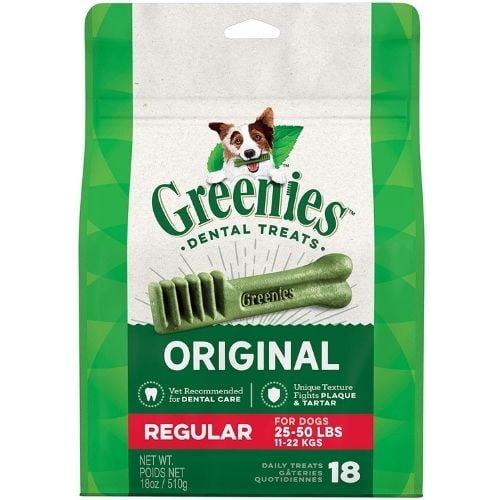
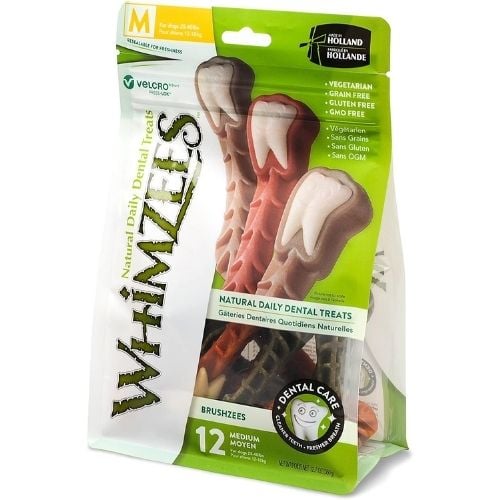
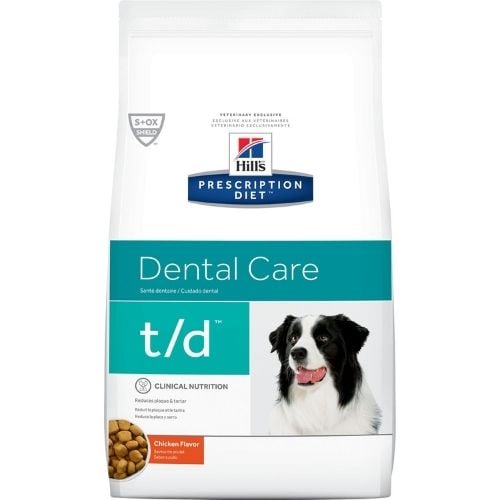
There are several commercially available diets designed to remove mild dental tartar that may help benefit pets with mild dental disease or prevent tartar buildup, such as Hill's Prescription Diet t/d. Their food has been clinically proven to reduce plaque, tartar, and food stains.
Dental Products Ideal For Dogs Who Hate Having Their Teeth Brushed
These products are especially great for dogs who aren't used to having their teeth brushed. But don't give up on brushing! Check out this video for some extra help in teaching your dog to tolerate (or even enjoy) getting their teeth brushed.
3. Keep Your Dog Active, But Don’t Overdo It
Muscles support joints. Without good muscle tone, your dog's mobility decreases drastically.
Joints in motion stay limber; joints not in motion will become stiff
Start incorporating appropriate exercise, conditioning, and stretching, as early in your dog's life as possible. Don’t wait until your pup becomes a senior and can’t get up.
Know your dog's limits. Older dogs won’t be as athletic as they once were but may still want to keep running. It’s up to you, as their caregiver, to know when to tell them to slow down.
Consider physical therapy if your dog is older and has muscle mass loss, and is showing signs of joint stiffness or arthritis.
Read more about being proactive about fending off arthritis in dogs as young as puppies.
Read for tips on helping a senior dog with mobility, including physical therapy and supplements for their joints.
4. Provide Mental Enrichment and Stimulation
Just like with aging people, cognitive function can and will decline in our aging pups. And, as with people, it’s essential to start early to keep their minds sharp.
There are many activities, products, toys, etc., that you can use to help enrich your dog’s environment and help keep them mentally stimulated.
Even short and sweet daily training sessions help to keep your senior pup's brain sharp. And it's never too late to teach an old dog new tricks!
A top enrichment activity that benefits dogs of all ages, but is especially easy for seniors, is the "sniffari." Instead of focusing on going the distance on daily walks, your dog can focus on decompression time and take in the smells.
Their sense of smell is the primary way they view the world, so it's important to let them take in all of that information.
Check out this video to learn how to go on sniffari with your pup:
Below are some favorite enrichment products for senior dogs. To see more, including some options you can create at home, check out "Dog Enrichment: Toys, Games, and DIY Ideas."
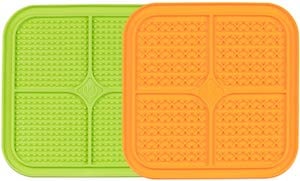
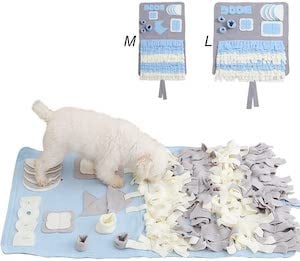
Your dog will benefit greatly from enrichment activities tailored specifically to their breed. Take this quick quiz to get breed-specific ideas for your dog's enrichment:
5. Regular Veterinary Visits
Veterinary visits are important at least once a year. However, once your dog is a senior, double up on their annual check-up and go every 6 months.
As hard as it is for us to admit, our canine pals age faster than we do, and because we want them around for as long as possible, we have to be proactive as they age.
To stay on top of the aging process, your veterinarian needs to be able to perform a physical exam from nose to tail, as well as perform routine blood work examinations and any other necessary tests to ensure everything is continuing to function well as your pet ages.
This way, they can catch any abnormalities before they become a significant problem, and they may be able to start any medications or initiate preventative measures sooner rather than later that may prolong your furry friends’ life.
Establishing a normal or baseline of what is normal for your dog and then being able to know when your pup is veering off of their normal is very important for your veterinarian, which is why regular check-ups are vital, even if something seems insignificant, it could be leading to a significant issue if not caught early.
6. Supplements
Prevention is better than the cure. And supplements aren’t just for humans!
There are amazing supplements available for our canine pals to help stave off conditions such as arthritis, vision issues, as well as help keep their coats and nails healthy and strong.
It’s always a good idea to do your research before starting any type of supplement. Here are some suggestions when you start thinking about putting your pooch on a joint supplement.
- First, there is no time like the present! Joint supplements are designed to protect the cartilage in their joints. They can’t reverse the damage, so starting these products before damage occurs is key. They also have anti-inflammatory components, so they are a great complement for active, playful dogs or dogs who may already have inflamed joints.
- Look for key ingredients; just like in your dogs’ foods, the main products in any supplement will be listed first. My advice is to stick to the common and well-researched ingredients such as glucosamine, chondroitin, and MSM (Methyl Sulfonyl Methane).
- Ideally, there shouldn’t be any artificial flavors, additives, or fillers. Or any crazy long lists of ingredients you can’t pronounce.
Read more for our recommendations on joint supplements.
7. Pay Extra Attention
Pay extra attention to your pup as they age; things are going to change. So, it’s important to pay attention to these changes and modify your behavior and even sometimes your home's layout to accommodate your aging pup.
Eyesight: Their eyesight is likely going to change, and they may have difficulty navigating their everyday environment.
Try keeping your furniture layout consistent and not move things around.
Hearing: The same with their hearing; they may become startled if approached from behind and don’t hear you approach them.
Think about the scenarios where they rely on their hearing, especially for safety reasons, and modify their routine or environment.
For example, don’t leave an older pup outside unattended who may not be able to see or hear as well as they once used to, as these could lead to unfortunate accidents such as falling down stairs or heading into traffic inadvertently.
Mind: You may notice your pup sleep longer or they may stand and seem to stare into no-man's-land or even corners for minutes at a time.
They also may have trouble recognizing you or family members that only visit on occasion. The best thing to do for cognitive decline, as with any aging process, is to start early before it becomes an issue.
Keeping your dog’s mind active as they age is very important. Take them on a ‘sniffari’, where they can sniff for as long as they want, use puzzle toys (for mealtime or if they are food motivated), or let them watch ‘dog TV’ on YouTube.
Mobility: It’s also essential to modify your home as your dog ages. Wood floors can become slippery for older paws, so laying down inexpensive carpet runners for your dog to navigate safely is one option.
Investing in ramps or stairs for the smaller breeds to climb onto beds and/or couches to prevent jumping and or falling is also well worth the purchase. Additionally, consider starting those supplements, as mentioned above, if you haven’t already, to protect and lubricate their joints and decrease inflammation.



